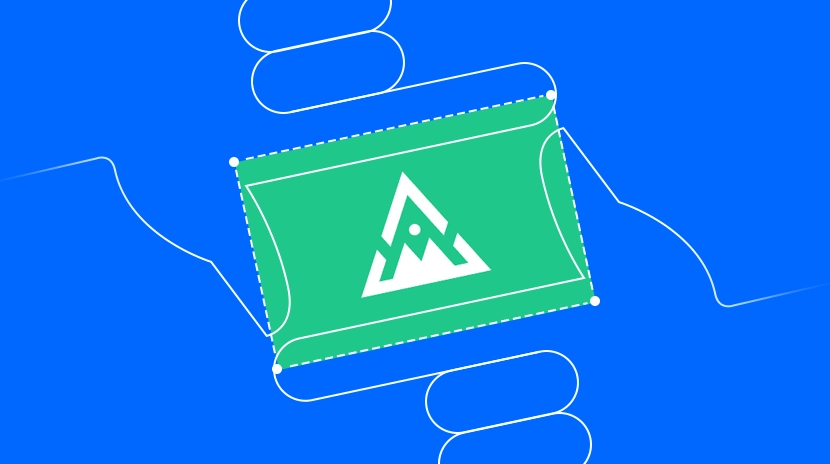overcollateralization

Overcollateralization is a foundational risk management mechanism in the decentralized finance (DeFi) ecosystem that requires borrowers to provide assets worth more than their borrowed amount as security. This practice typically demands collateralization ratios of 150% or higher, meaning borrowers must deposit assets worth at least 1.5 times the value of their loan. The primary purpose of overcollateralization is to protect lenders against borrower defaults and collateral price fluctuations, particularly in the highly volatile cryptocurrency markets. This mechanism has become a cornerstone of mainstream DeFi lending protocols such as Maker, Compound, and Aave, ensuring these trustless, automated protocols can function properly.
Work Mechanism: How does overcollateralization work?
The overcollateralization mechanism in DeFi lending operates through smart contracts and automated liquidation systems:
-
Collateral deposit: Borrowers first lock their crypto assets in a smart contract, with the value exceeding the amount they intend to borrow.
-
Loan-to-value calculation: The protocol determines the borrowable amount based on the collateral's value, typically expressed as a loan-to-value (LTV) ratio ranging from 50-75%, meaning users can only borrow a fraction of their collateral's worth.
-
Health factor monitoring: The system continuously tracks the ratio of the collateral's market value relative to the borrowed amount, commonly referred to as the "health factor."
-
Liquidation trigger: When the collateral value decreases due to market fluctuations, causing the health factor to fall below a predetermined threshold, the smart contract automatically triggers liquidation.
-
Liquidation process: During liquidation, the system sells sufficient collateral to repay part or all of the debt, usually imposing a liquidation penalty on the borrower. Liquidators (third-party participants) receive a certain percentage discount on liquidated assets as an incentive.
This mechanism ensures that DeFi protocols can maintain solvency and liquidity even without traditional credit assessments and legal recourse.
What are the main features of overcollateralization?
As a key component of the DeFi ecosystem, overcollateralization has several distinctive characteristics:
Security and risk management:
- Provides multiple layers of protection for lenders, ensuring principal recovery even during significant market volatility.
- Establishes an early warning mechanism through liquidation thresholds to prevent systemic defaults.
- Allows protocols to adjust required collateralization ratios based on the liquidity and volatility of collateral assets, with riskier assets requiring higher collateralization.
Capital efficiency and limitations:
- Reduces capital utilization efficiency as borrowers must lock up significantly more assets than they borrow.
- Creates a capital-intensive borrowing model that may limit participation from average users.
- Establishes an "over-collateralized economy" where large amounts of crypto assets are locked as collateral.
Market impact:
- May trigger cascading liquidations during market downturns, potentially exacerbating asset price declines.
- Provides additional liquidity use cases for cryptocurrencies, increasing overall network value.
- Facilitates the creation and circulation of stablecoins, such as collateral-backed DAI.
Future Outlook: What's next for overcollateralization?
While currently dominant in DeFi, the overcollateralization mechanism is likely to evolve in several directions:
As the DeFi market matures, we might see the emergence of more sophisticated and efficient risk assessment models that can more precisely calculate necessary collateralization ratios, improving capital efficiency. Cross-chain collateralization and diversified collateral portfolios will become trends, allowing users to combine various asset types across different blockchains as collateral to reduce concentration risk.
Potential innovations include the introduction of credit scoring systems based on on-chain behavioral history and transaction patterns, potentially allowing users with good reputations to receive lower collateral requirements. Additionally, the integration of tokenized real-world assets (like real estate, commodities, and traditional financial assets) will expand the range of assets available as collateral, potentially reducing overall systemic risk.
Changes in the regulatory environment will also profoundly impact overcollateralization mechanisms. As regulatory frameworks mature, DeFi platforms may need to adjust their risk management practices to comply with regulatory requirements, potentially leading to more standardized collateralization ratios and liquidation procedures.
Hybrid models combining overcollateralization with under-collateralized or unsecured lending solutions might become industry standards, allowing users to choose different borrowing methods based on their needs and risk preferences.
As a foundational mechanism in DeFi, overcollateralization will continue to evolve to balance security, capital efficiency, and user accessibility.
Overcollateralization serves as a core security pillar of the DeFi ecosystem, effectively managing credit risk in trustless environments by requiring borrowers to provide security exceeding their loan amounts. While this mechanism enhances system stability, it also presents challenges in capital efficiency. With technological advancements and market maturity, we may see more optimized risk management models emerge that balance security and capital efficiency. Regardless of how it evolves, the core value of overcollateralization will continue to underpin the infrastructure of decentralized finance, ensuring its security and sustainability while adapting to changing market demands and regulatory landscapes.
Share
Related Articles

In-depth Explanation of Yala: Building a Modular DeFi Yield Aggregator with $YU Stablecoin as a Medium

Sui: How are users leveraging its speed, security, & scalability?
